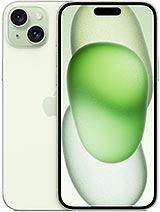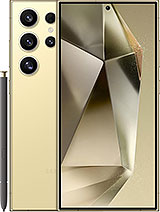
Alternatives, pros and cons, verdict
Competition
This year, Apple hasn’t revised the iPhone 16 Plus’ price, so it’s once again €1,100 in Europe and $900 in the US. This also means that it stands against the same competitors as last year. Given the price drop of last year’s iPhones, many of you are probably wondering whether the iPhone 15 Plus is good enough or if the iPhone 15/16 Pro Max are worth the extra few bucks. After all, these are your only big-screen Apple alternatives to the 16 Plus.

iPhone 16 • iPhone 16 Plus • iPhone 16 Pro Max • iPhone 16 Pro
Compared to its predecessor, the iPhone 16 Plus brings rather modest improvements. Sure, the new chipset is considerably more powerful, you get access to Apple Intelligence and two new buttons – Action Button and Camera Control. However, the EU market doesn’t get access to Apple Intelligence for now, and we found the Camera Control to be a mixed bag. It can be useful sometimes but also get in the way. The only meaningful improvement is the battery life, which is now record-breaking. We give it that.




Apple iPhone 15 Plus • Apple iPhone 16 Pro Max • Apple iPhone 15 Pro Max • Samsung Galaxy S24 Ultra
In case you are willing to spend more for Apple’s “latest and greatest”, there’s nothing better than the iPhone 16 Pro Max. Naturally, it costs more – about €450 more in Europe and about $300 more in the US. You get a better display, better cameras and a more powerful chipset for the extra few hundred bucks. All in all, it’s a better phone in pretty much every aspect except battery life. Although, the 16 Pro Max gets pretty close.
Perhaps the most sensible choice would be to get the iPhone 15 Pro Max while stocks last. Apple is no longer selling the handset officially, but there are plenty of units at third-party sellers. The 15 Pro Max is a better phone than the 16 Plus, and it costs the same if you account for the storage tiers as the 15 Pro Max comes with 256GB by default.

Lastly, users willing to change teams should consider the Samsung Galaxy S24 Ultra. If you are eyeing an Android alternative, the Galaxy S24 Ultra should definitely be on your list of considerations. Aside from the lower battery life, the S24 Ultra outpaces the 16 Plus in all other aspects – cameras, display, fast charging and even has a stylus pen as a bonus. The best part is that the S24 Ultra price massively undercuts the 16 Plus, so you will be saving a few bucks too.
Verdict
Although an improvement over last year’s iPhone 15 Plus, the 16 Plus fails to impress in some key areas. We appreciate the addition of the Action Button and the Camera Control key as well as the significant improvement in the chip department. Still, those are hardly value-adding features for the mass user. At least not in a big way. Battery life, seems to be once again the Plus’ key selling point and this year, it’s chart-topping.

iPhone 16 • iPhone 16 Pro • iPhone 16 Pro Max • iPhone 16 Plus
The device still lacks a telephoto camera, and the ultrawide, although improved, is not amazing. The display is only 60Hz for yet another year and proper fast-charging technology has yet to reach Apple’s labs. Those are all features you can find in all modern smartphones. The modest upgrades can’t build a strong case for getting the 16 Plus instead of the 15 Plus, for example or even the 15 Pro Max.
Pros
- Subtle redesign, camera island more minimalist than last year.
- Great build quality, water-resistant up to 6m deep, industry-leading front glass scratch and shatter resistance.
- Bright OLED screen, HDR10, Dolby Vision.
- Chart-topping battery life.
- Excellent loudspeaker quality.
- Great all-around performance.
- Good camera performance overall.
- Every iPhone comes with at least five years of iOS updates.
Cons
- A lot more expensive than corresponding Android alternatives.
- The display is 60Hz; there is no Always On option, and the bezels are thicker than the Pro models.
- Charging isn’t particularly fast.
- Apple’s iOS restrictions can be off-putting to newcomers to the ecosystem.
- No dedicated telephoto camera.



